HP Discover US 2014. The Day 2 Buzz
Series:
- HP Discover US 2014. The Day 1 Buzz
- HP Discover US 2014. The Day 2 Buzz
- HP Discover US 2014. The Day 3 Buzz & Wrap Up
Day 2 of HPs conference juggernaut continued today.
Converged Infrastructure and SDDC
First up I attended another Coffee Talk on Converged Infrastructure in relation to SDDC. lots of talk about what SDDC is, not much from HP on what that means in terms of software products but I think I worked it out later. People may have a definition of SDDC as requiring commodity hardware but could you have SDDC if it requires specific hardware from a vendor? conceptually I don’t have a problem with than, its ll about definitions.
Discussion turned to 3PAR and different control planes, admin, user, self-service and application, all seen as SDDC.
Point also made that software anything still needs hardware to run on. There is no SDDC without hardware. Hardware may be being driven to commodity and utility but its still important. My worry is HP is still putting a huge amount of investment in hardware but will anyone be willing to pay enough for it?
Also talk about management product conversion for SDDC, what HP is doing with OneView.
Something HP do have in their favour as on the infrastructure side as a hardware company is they can integrate with anyone, VMware, Microsoft, OpenStack etc. Anyone can bring their software stack to HPs hardware, makes them have a broader appeal than VCE for instance or other converged infrastructures that only do VMware. HP very much wants to be vendor agnostic but sees its future in open source but very much at enterprise level. I see HP trying to bring the messy uncontrolled way of open source into their risk adverse enterprise customers. Save costs with open source, don’t be tied to a software vendor but let HP handle the provisioning of your infrastructure on whatever platform or cloud you want is the sales pitch I think. HP can be your enterprise best friend.
I spotted some SDDC slides later in the day showing how HP software relating to VMware fitted into the HP SDDC world. Spot the three different Vmware,Vmware,VMWare spellings!
Lots more discussion on OpenStack, HP saying how they are going to navigate the open source ethos, they will not redo the core of OpenStack but will do additional things to harden it and can be the trusted advisors to handle the messy upgrade paths. They also see their OpenStack offering very much as a private cloud play for enterprises and not public cloud. I think this could be their downfall. As more and more workloads move towards the public cloud, HP doesn’t have a footing. Sure, there are a few years left of enterprises running private clouds but ultimately enterprises are going to move mostly out of the private cloud operation model and into public cloud. Private cloud is a stepping stone. If HP only does private cloud, where does that leave them in the future? Big strategic question, not seeing any answers other than HP relying on enterprise inertia. HP does have a hosting service but that’s a completely different division, Enterprise Services. Strange that the converged infrastructure and hosting part are not more integrated. I really think HPs only medium term strategy should be all clouds to all enterprise people. We will build/run/manage your private cloud on VMware/OpenStack/Microsoft but when you want to move anything to the public cloud, we will be here with open arms with guaranteed performance/SLAs/comfort and all we want is a purchase order.
Lunch wasn’t too bad for a conference, certainly had worse!
Servers
Then we had a Coffee Talk from the server division.
The discussion started immediately about HP charging for firmware updates and from the attendees universal negative feedback. I’ve blogged about this before so wholeheartedly agree. Charging for firmware is a negative goodwill penny pinching play. Feedback was HP could have some sort of cheap firmware only support option but I say firmware updating comes with the hardware purchased and is transferred to the next owner.
Discussion went on to HP OneView, the new converged management appliance. They say 1.1 is ready for production 1.0 was a, well 1.0 product and they learned some lessons which have now been addressed.
Talk then about the Apollo HPC system which performance wise is very impressive. Its liquid cooled and they’ve had to build a whole bunch of tech to keep the water separate including it entering the system at below atmospheric pressure to be able to control flow better and avoid leaks. Apollo is based however still based on ProLiant servers.
Here’s what Apollo looks like, see the water cooling plumbing in the picture on the right.
Lots of discussion on Moonshot. Someone in the discussion saying it is great, he’s working for a startup and was much cheaper and more efficient to run than buying cloud services. A hosted desktop model has been released with 4 discrete desktops on each Moonshot cartridge running XenDesktop. This gives each workstation guaranteed performance as there’s no shared virtualisation in play, each workstation is a physical unit with great density and super low power consumption. Another use case is using Moonshot as a physical security boundary, nothing shared so each cartridge server is physically separate from all the others. I still think Moonshot is very niche, most applications could just use virtualisation on blades or rack mounted servers for higher density per rack at lower cost. Aren’t the days of physical separate fading fast?
Discussion moved onto UCS and their market share. HP scoffed at Cisco’s numbers saying, sure they had great growth but from such a small number its insignificant, shipped units is what counts.
HP Blades
I then spent time time looking at the HP Blades stand.
I didn’t actually know before but you can purchase a Graphics Expansion Blade as well as a PCI Expansion blade, that surely gives you more options for your blade connectivity, or maybe you should just be buying a rack mount?
I then did what was called a Living Lab on HP OneView where you connected to an existing HP OneView system from an HP Chromebook and had a script you ran through to learn about OneView. It was the 1.1 version so had the 3PAR storage provisioning which I hadn’t seen before.
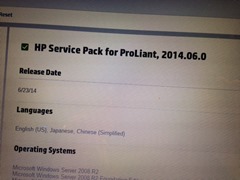 First of all, what I did spot though was a new version of the Service Pack for Proliant imminently available. 23 June it looks like it will be released.
First of all, what I did spot though was a new version of the Service Pack for Proliant imminently available. 23 June it looks like it will be released.
The lab did show off OneView well going through provisioning networks in Virtual Connect, provisioning new storage on the 3PAR and then connecting these networks and storage to blades with server profiles. There is a bit of a learning curve with tying all this together as there are further abstractions of logical groups of various components that you won’t have with your current enclosures, blades and server profiles. They are good changes, the idea being you built with scale in mind so have if you roll in a new rack to add capacity to your environment you add the enclosure to an existing logical group which would then inherit various networks, storage etc. Much quicker than repeating all the identical provisioning you did previously. Worth taking the time to read before rushing headlong into it.
Here’s what the Logical Interconnect Groups look like.
At last you can now manage the boot order and edit the BIOS settings directly from within OneView! 🙂
You can also now manage the local storage as well as 3PAR SAN storage so can create a RAID1 array for example from within OneView which is much easier than hassling with the scripting process.
The lab continues into the integration with vCenter and SCVMM. for vCenter you can view all of the information from OneView directly within the web client which has been slickly done.
There was also a fancy provisioning option where you could select “Grow Cluster” which would set off an automation task that would create boot from SAN info and server profiles, use iLO4 Intelligent Provisioning to actually install ESXi, configure it up and add to vCenter. Looks good if people can actually get that level of automation to work.
HP Software Update Manager (HP SUM)
I then chatted at the HP SUM booth. This is now far more tightly integrated into HP OneView. I gave plenty of feedback which I hope gets taken on board. I don’t want to separate my update definitions between blades (BL) and rack mount (DL,ML) servers and also between OS (Linux/Windows). Just give me Windows update for all ProLiant servers and another one for Linux. I don’t distinguish between blades and rack mounts for firmware and software management.
I mentioned plenty of companies have lots of Windows 2003 installed and there’s no SPP for them. HP say they had to draw a line in the sand and go forward so I’m not missing something, you need to go manually to every server support page and download all the drivers. What a pain!
I also asked how to manage software across different models. If you have Gen 8s with Agentless Management, what do you actually need to install that is different from G7s for example? It’s not easy to find out. Surely AMS needs way less software which means less updating? I asked for them to make this clearer. HP SUM 7 is going to be released later this year and will allow you to filter more on your servers so you can create custom baselines and target different models so can have the same SPP but one customised for Gen8/9s and one for G6-7s and be more able to easily deploy per model. Hopefully this is rolled out cleverly. I want HP to tell me the minimum I need to install and let me add features easily. At the moment its a bit of a guessing game. I also mentioned the configuring components piece is buggy and sometimes asks you to configure the component outside of HP SUM which sort of misses the point and actually takes quite a bit of effort to do this, its just easier to use HP SUM 5.
Keynote
I then saw some of the keynote which was HP highlighting some new technology they are working on.
HP CEO Meg Whitman started talking about the “New Style of IT”
The big announcement was called “The Machine” which is an HP R&D project to rethink the basics of computing to create something with limitless computing power, thinking 100TB in your hand.
We are only creating and needing more data so new computers need to be created to handle this.

Here’s the video explanation.
Next up, Thomas Friedman who is a NY Times columnist & Pulitzer prize author chaired a discussion with HP CEO Meg Whitman and also brought on stage Intel CEO Brian Krzanich and via video link (Skype?) Microsoft CEO Satya Nadella, the 2 HP Discover major sponsors.
Intel wants to make everything smarter, all devices need to get smarter, these devices being everywhere from shirts to cars. They also are looking at building devices that can charge from your body heat!
Microsoft want to see the “Internet of Everything”, not just the “Internet of Things”. They want to do real time translation for Skype and have Cortana know the traffic is bad and wake you up early so you are on time for work.
Asked what Washington can do to help the industry, Meg said immigration reform, Brian said tax reform and Satya brought up surveillance, saying trust needs to be brought back. Lots of talk about how these companies want to retain talent and continue to invent things in the USA.
Here’s the whole keynote:
Converged Systems
Tom Joyce who is the Boss of Converged Systems then hosted a Coffee Talk about HPs Converged Systems called Sharks.
These are pre-packaged engineered systems, not just limited to virtualisation (ala VCE) but giving enterprise customers IT as a service, virtualisation to cloud and also engineered systems such as HPC and SAP HANA. They have a distinct advantage in being software agnostic so can be sold with VMware/Hyper-V/OpenStack/KVM for example.
Here’s Tom explaining them in his Discover session
Converged Systems is not just infrastructure cobbled together which is what VARs have been doing for years and that’s where HP OneView comes in to create that single management overview that can be automated against.
I asked about hyper-converged offerings and Tom was quite dismissive of the likes of Nutanix and Simplivity implying they were minnows and not worth worrying about as they were new and in terms of sales a drop in the ocean for HP. I think HP sees itself as working with the largest enterprises who wouldn’t dare bother with anything so small. I’m not so sure about that, sure SAP HANA and HPC are big money items but VDI and cloud environments can grow pretty quickly and having a system that scales linearly is very attractive. He did say though that they are always looking for new things to do and even today you could create a hyper-converged system with rack servers, add a VSA and manage through OneView. Perhaps HP will create something official and get over their big, slightly arrogant attitude.
The discussion went onto the previous cloud incarnation, CloudsSystem8 which is the evolution of the old Cloud System Matrix.
Tom then mentioned that all the SDDC in the world still needs to run on infrastructure and HP wants to be the best compute platform in the world.
I brought the discussion back to OneView which sits in Toms group and he said with the 1.1 release is it very much production ready. 2.0 will be out this year and 3.0 next year but didn’t give any hints as to what’s in them. He did however say that there may be future options for extensibility, initially for Cisco ToR switches which customers are asking for. This would be very interesting, you could provision your 3PAR storage, create your Virtual Connect networks, build your Server Profiles and also talk to your Cisco switches to provision all the VLANs down the trunks, sounds great!
As for other things in the future, they are taking a measured approach, more 3PAR integration, adding remote support and plenty more SDK options. The idea though is not to load it up with too much and create another bloated monster like HP SIM.
Then HP had the conference party in the Venetian Ballroom.
HP paid for travel and accommodation to attend HP Discover but didn’t pay a penny for me to write anything good or bad about them.
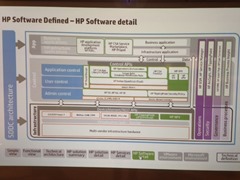
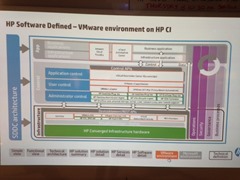

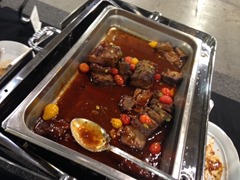
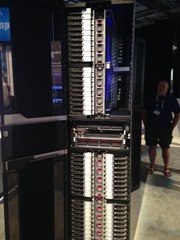
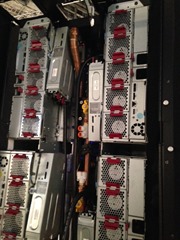
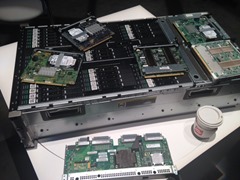
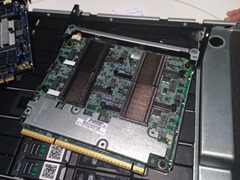
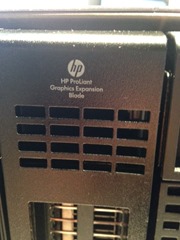
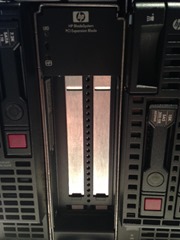
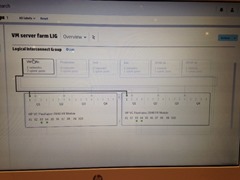
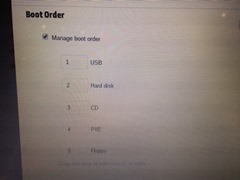
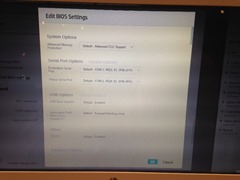
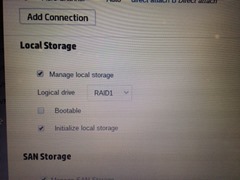
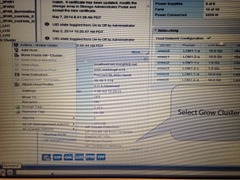

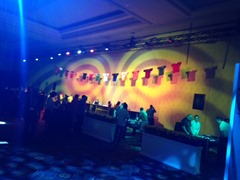




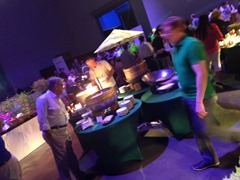

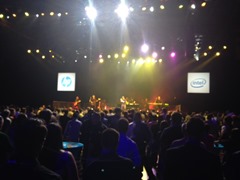





Recent Comments